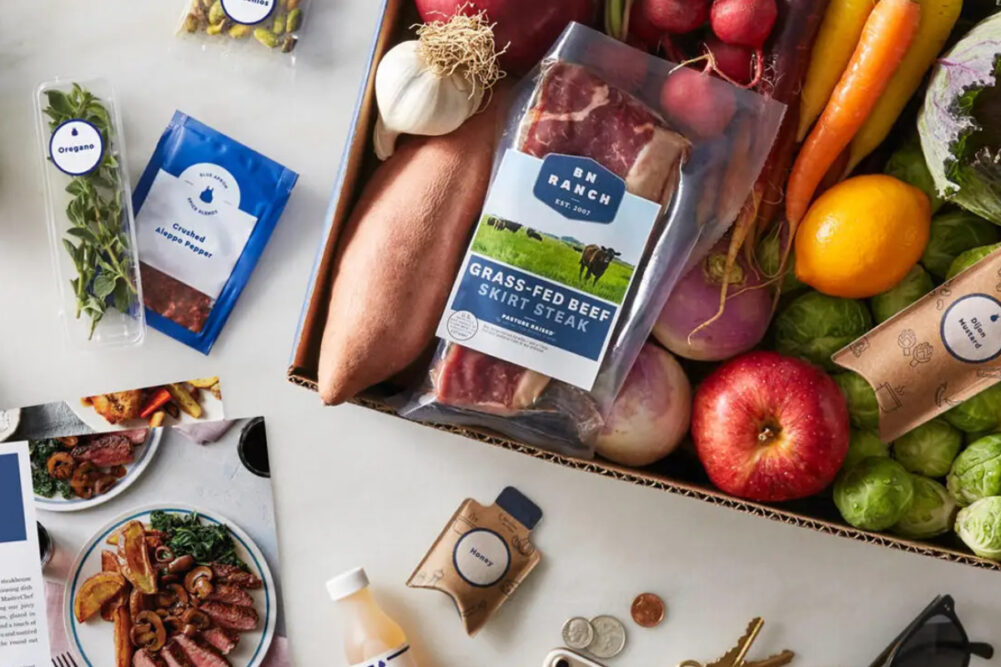 KANSAS CITY — The rise and collapse of Blue Apron Holdings, Inc. represents a lesson in accelerated obsolescence. The subscription-based meal kit company’s goal was to offer a premium solution to a common consumer 4 p.m. dilemma — What’s for dinner? For a time, Blue Apron’s ready, and simple-to-prepare, solution resonated powerfully with consumers. Then, Blue Apron’s upward path to success collided with changing consumer expectations and the emergence of more agile competitors that quickly supplanted the service and made it irrelevant for many people.
KANSAS CITY — The rise and collapse of Blue Apron Holdings, Inc. represents a lesson in accelerated obsolescence. The subscription-based meal kit company’s goal was to offer a premium solution to a common consumer 4 p.m. dilemma — What’s for dinner? For a time, Blue Apron’s ready, and simple-to-prepare, solution resonated powerfully with consumers. Then, Blue Apron’s upward path to success collided with changing consumer expectations and the emergence of more agile competitors that quickly supplanted the service and made it irrelevant for many people.
In the year ended Dec. 31, Blue Apron Holdings sales tumbled 32% to $454,868,000 as the company continued to lose customers. Gaining and retaining customers became more difficult in 2019 after management slashed the company’s marketing budget to $48,133,000 from $117,455,000 the year prior.
During 2019, the company sustained a loss of $61,081,000, which was an improvement over 2018 when the company lost $122,149,000.
The company’s board of directors is evaluating strategic alternatives, which may lead to a sale of the company, a “strategic business combination” of some sort or a transaction that results in private ownership.
Blue Apron’s predicament isn’t surprising. Market caution was apparent on June 29, 2017, when the company conducted its initial public offering. Shares started trading at $10, well below the proposed target range of $15 to $17. Analysts rightly questioned the company’s ability to add scale nationwide by attracting and retaining customers. Adding to the challenges were the costs of shipping fresh ingredients directly to consumers.
Fast-forward to 2020 and Blue Apron’s stock was trading at $2.70 per share when the markets closed on Feb. 24.
Other subscription-based competitors have endured similar challenges. Home Chef, Plated and Chef’d have all been acquired and seen their business models diversified to limit reliance on the need for gaining and maintaining subscriptions.
The meal kit services faced numerous obstacles. While some consumers view meal kits as an attractive option, many are reluctant to commit to a subscription. Meanwhile, food retailers have made meal kits a component of their core fresh food selection, heightening the competitive pressures on the subscription services.
Another reason subscription-based models in the food industry have failed to gain broader acceptance is the concept runs counter to the spontaneous mentality of many consumers, a marketplace white space that has more than adequately been filled by GrubHub, UberEats, DoorDash and others. These app-based services offer customers access to a wide variety of cuisines at different price points and may be readily available, sometimes in less than an hour.
There are many unknowns as food and beverage marketers and manufacturers continue to transition to selling goods online. Understanding what concepts consumers will embrace remains elusive. Today, the market is truly omnichannel, and suppliers must carefully select which channels they will commit to and invest in.
Blue Apron identified a narrow niche to fill and, following extraordinary initial success, discovered how quickly a concept may go from category leader to also-ran. There are lessons to be learned in the company’s story.





